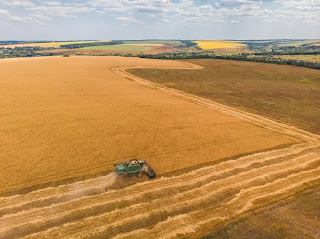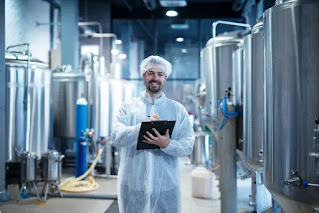The essential hindrance to worldwide protection is the opposition for land between biological systems that store carbon, produce food, and backing biodiversity. As food creation increments, more timberlands, and other regular territories are obliterated, ranches extend, and numerous wild animals and plants find it harder to get by. In this manner, except if the hidden issue of food creation is tended to, worldwide preservation, which is at present focused on the COP15 culmination in Montreal, will fall flat.
Joyfully, a wide-scale transformation in food creation is presently conceivable in light of a huge number of new innovations that are being created. One of us, Chris, has directed research that proposes that this change could fulfill expanded worldwide food requests from a developing human populace on under 20% of the cropland now in presence. Or on the other hand, to put it another way, in something like a long period, these advancements could dispose of horticulture from no less than 80% of the world's land.
Most of the land used to make nourishment for people is devoted to the creation of meat and dairy, which incorporates both reach grounds and harvests planted explicitly for steers to take care of. The amount of region used to develop crops that are then used to take care of dairy cattle can be determined by including all of India, South Africa, France, and Spain.
Regardless of rising veggie lover and vegetarian populaces in certain countries, meat utilization has moved by over halfway around the world throughout the course of recent years and is supposed to twofold before the century's over. At the present time, raising all that more meat will require either extending ranches or pushing more cows, chickens, and pigs onto as of now existing grounds. The two decisions are awful for biodiversity.
The creation of meat and dairy items is as of now a terrible industry. For example, most of the hens are brought up in high-thickness taking care of frameworks, and this pattern is additionally being found in the hoard, meat, and especially dairy creation. Try not to be tricked by the depiction of content cows with daisies standing out of their lips; current advancements are unforgiving, contaminating, and hindering to biodiversity and the planet.
Without resolving the issue of food creation head-on, we are compelled to battle inevitable change, every now and again without any opportunity of long haul achievement. The justification for the decay of biodiversity should be tended to. Rather than creating billions of parasols, the essential overall procedure for battling environmental change is to focus on the foundation of the issue and lessen ozone-harming substance outflows (however we might require these as well). Biodiversity requires something similar.
How is it that we could achieve this?
An option is presented by cell agribusiness, which can possibly be among the most progressive innovative advancements of hundred years. The strategy of the time alluded to as "lab-developed food," involves making creature items from real creature cells instead of developing genuine creatures.
How about we put this in a setting where delivering meat or milk from creature cells sounds unusual or revolting to you. Consider a bottling works or cheddar processing plant, which utilizes a scope of advancements to blend, mature, clean, and screen the development of tremendous amounts of lager or cheddar in a sterile climate with metal tanks. On the off chance that creature cells are utilized rather than grain or milk, a similar office can make dairy or meat items in a maintainable and viable way.
The processing plant would expect undeniably less space to create a similar measure of meat or milk since there would be no requirement for cows to wander aimlessly in pastures.
Microbial protein creation is one of the other developing innovations. In this field, microscopic organisms utilize the energy from sunlight-based chargers to change carbon dioxide, nitrogen, and different supplements into starches and proteins. In only 7% of the area, this could deliver a similar measure of protein as soybeans. These could then be used as creature feed and protein-food-added substances, two critical purposes for soy (counting for pets).
Indeed, even while never going through a living plant or creature, sugars and starches can be delivered by desalination or by eliminating CO2 from the climate. The subsequent sugars would be delivered in a minuscule piece of the space required by ordinary yields, yet they would be synthetically indistinguishable from those gotten from plants.
How to utilize abandoned farms
Regardless of whether the request continues to expand, these new innovations can in any case have a critical impact. Chris' examination infers that somewhere around 80% of farmland might be delivered to be used for something different, notwithstanding the way that it is predicated on the understanding that the world's meat utilization will increment.
That region could be utilized to make regular jams or to store carbon, for example, in backwoods or the soaked soil of peat marshes. In addition to other things, it very well may be utilized to develop plant-based building materials or simply more human-consumable food varieties.
Modern animal frameworks that create overflowing measures of compost, bones, blood, guts, anti-infection agents, and development chemicals will likewise be wiped out. From that point forward, any domesticated animal farming that was as yet vital should be possible so accommodatingly.
Since there would be less interest in the land, fewer synthetics and pesticides would be required, and crop development could turn out to be more untamed life well disposed of (worldwide reception of natural cultivating isn't achievable at present since it is less useful). The new innovations request a great deal of power, consequently, this change should be joined with a total shift to an environmentally friendly power.

Obviously, making an interpretation of these innovations into frameworks for mass manufacturing will challenge. However, neglecting to do so is probably going to bring about escalating cultivating rehearses, an expansion in the number of creatures kept in bondage, and further loss of regular territory.
To keep away from this result and decrease cropland by 80%, there should be areas of strength for a purpose to do such, as well as social acknowledgment of these new food choices. It will call for both "sticks" like higher charges and the withdrawal of endowments for harming innovations, as well as monetary and political "carrots" like ventures, sponsorships, and tax reductions for an ideal innovation. Focuses on biodiversity will continue to bomb A large number of police on the off chance that this doesn't emerge.





_11zon.png)

No comments:
Post a Comment